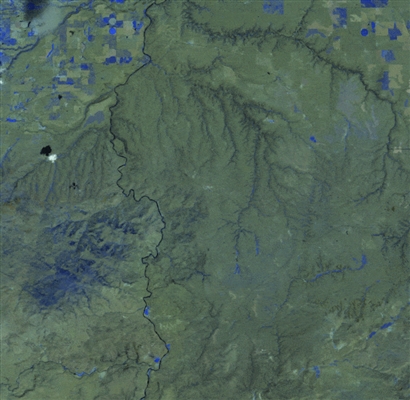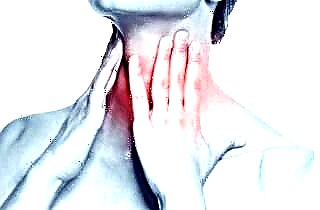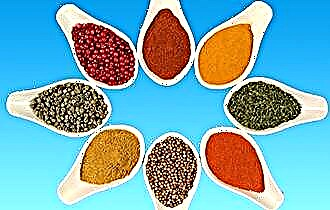In medical practice, the term "asthma" is often used to denote difficulty breathing associated with pathology of the cardiovascular or respiratory system. It is necessary to distinguish between the concepts of bronchial and cardiac etiology of disorders, which have different mechanisms for the development of symptoms and a therapeutic algorithm for management. Cardiac asthma is an acute condition that arises from a disorder of the outflow of blood from the left sections, and is characterized by an increase in pressure in the vessels of the pulmonary circulation. Violation of the permeability of the capillaries of the lungs with sweating of plasma into the alveoli contributes to edema.
Causes of the condition
Cardiac asthma is the second name for acute insufficiency of the pumping function of the left chambers of the heart. The emergence of pathology can be associated with diseases of the cardiovascular and other systems, the main reasons are presented in the table.
| Cardiac (associated with left ventricular weakness) | Extracardiac (appearance of disturbances caused by increased vascular permeability) |
|---|---|
|
|
The diagnosis of cardiac asthma is most often made in the prehospital phase of emergency care, which requires a differential approach to treatment depending on the underlying cause.
Main signs and symptoms
The pathogenesis of the development of symptoms of cardiac asthma is realized through:
Decreased pumping function of the heart. Adequate blood flow to the left chambers and the absence of outflow contributes to the accumulation of fluid in the vessels of the lungs, with an increase in volume in which the permeability of the wall increases. The increase in hemodynamic pressure "pushes" the plasma into the intercellular space (interstitium) with further sweating into the alveolar cavity.
- Increased permeability of the vascular wall against the background of other pathologies in which pulmonary edema can develop with preserved or minimally reduced heart function.
Puffiness
Edema is a pathological accumulation of fluid in the tissues, which develops due to a violation of lymphatic or venous outflow.
Features in acute heart failure:
- first, swelling of the neck area develops with difficulty breathing;
- swelling of the saphenous veins (jugular) veins;
- edema is cold, dense with a bluish tinge;
- the liver increases in size (hepatomegaly).
- free fluid in the abdominal and chest cavity, pericardium.
The development of edema in cardiac asthma is associated with a decrease in the function of the right sections (due to impaired outflow along the pulmonary trunk), and stagnation of blood in the system of the superior and inferior vena cava.
Choking and coughing
The onset of symptoms from the respiratory system is caused by a decrease in the respiratory surface of the lungs due to the accumulation of fluid in the alveoli. The main signs are:
- dyspnea;
- suffocation;
- cough;
- hemoptysis.
The difference between the concepts of "shortness of breath" and "choking" lies in the severity and severity of symptoms.
Asphyxiation is an extreme form of breathing disorder, which is accompanied by a feeling of lack of air and fear of death.
Cough is one of the most common signs of pulmonary edema. The main characteristics of the symptom in cardiac asthma are:
- constant (rarely - in the form of seizures);
- sputum - mucous in nature in moderate quantities, often mixed with blood (due to increased pressure in the chest cavity, bronchial arterioles rupture during coughing);
- the release of foam (blood plasma contains a large amount of protein, which "foams" with sharp and fast air currents during coughing).
The appearance of cough in patients with cardiac asthma is caused by irritation of mechanical receptors in the bronchioles and the "need" to empty the lungs about fluid.
Dyspnea
Symptoms of cardiac asthma include shortness of breath as one of the key manifestations of the pathology, which is characterized by difficulty breathing in and out, an increase in respiratory rate and a feeling of shortness of breath.
Features of shortness of breath of cardiac etiology:
- mixed type (as opposed to an attack of bronchial asthma, when exhalation is difficult);
- progression;
- patients assume a forced orthopnea position - half-sitting with lowered lower limbs and support on the shoulder girdle;
- the skin is pale, cold, with sticky sweat.
X-ray examination of the chest organs with such symptoms is characterized by a picture of "wet lungs" with a diffuse decrease in the transparency of the fields, blurred by a vascular pattern.
Heart pain and arrhythmia
Symptoms from the heart in acute circulatory failure most often occur due to the cardiac cause of the pathology.
Main manifestations:
heart palpitations (tachycardia);
- chest pain, pressing in nature, lasting more than 20 minutes;
- a feeling of interruptions in the work of the heart (constant or paroxysms), sudden stops or extraordinary contractions;
- loss of consciousness (due to a sudden decrease in blood pressure, the development of cardiogenic shock).
Diagnosis of rhythm disturbances and the choice of medications for relief is carried out based on the results of electrocardiography (ECG) recorded in 12 leads.
First aid to the patient: short algorithm
Cardiac asthma is an indication for urgent transportation of a victim to a cardiological hospital or intensive care unit of a specialized center.
At the pre-medical stage, it is necessary:
- call an ambulance team (EMS);
- provide the patient with a free flow of oxygen (unbutton tight collars, open windows);
- give a half-sitting position, lowering the lower limbs (for patients with low pressure - horizontal);
- if there is a history of coronary heart disease - Nitroglycerin or Isoket under the tongue;
- measure blood pressure, at low rates - apply venous tourniquets alternately on the arms and legs. It is forbidden to shoot abruptly - because of the risk of developing cardiogenic shock.
Timely (within the first 30 minutes) elementary methods of providing emergency care improve the prognosis for the patient: the survival rate increases by 2 times.
The use of folk remedies for the relief of cardiac asthma is strictly prohibited.
Upon arrival of the EMS, the patient is provided with venous access (catheter) and pain relievers (Promedol, Morphine) are administered.
Urgent actions for pulmonary edema
Emergency care for cardiac asthma at the stage of hospitalization implies a set of measures that are aimed at increasing the pumping function of the heart and compensating for the violations that have arisen (symptomatic therapy).
According to the protocol, in a hospital environment, the following is carried out:
- oxygen therapy (depending on the patient's condition: through a mask or in artificial ventilation mode);
- in the presence of hemoptysis with pink frothy sputum - the use of defoamers (Antifomsilan) using a special inhaler;
- diuretic therapy: Furosemide intravenously bolus 40 mg (Torasemide - 20 mg);
- vasodilators: intravenous Nitroglycerin - allowed with an increase in systolic blood pressure of more than 110 mm Hg;
- if there are signs of bronchial obstruction: Prednisolone, Theophylline;
- inotropic support (increasing the strength of heart contractions): Dopamine through a syringe-injector at a dose of 3-5 mcg / kg / min, Dobutamine 2-20 mcg / kg / min;
- cardiac glycosides (if there is supraventricular paroxysmal tachycardia, atrial fibrillation on the ECG) - Digoxin.
Anticoagulant therapy is recommended for patients with acute coronary syndrome, atrial fibrillation, artificial valves, deep vein thrombosis. Effective drugs are low molecular weight heparins (Enoxyparin, Fraxiarin, Deltaparin), which are administered subcutaneously at the rate of 0.1 ml per 10 kg of human weight.
Antiarrhythmic therapy is prescribed depending on the form of the disorder:
- ventricular fibrillation - electrical impulse therapy (up to 360 J), intravenous - 150-300 mg of Amiodarone, 1 mg of Epinephrine according to the recommendations for resuscitation;
- sinus or supraventricular tachycardia: metoprolol;
- atrial fibrillation: Digoxin 0.125-0.25 mg intravenously, Amiodarone 150 mg, anticoagulant therapy is mandatory;
- bradycardia (decreased heart rate): Atropine 0.25-0.5 ml, Isoprenaline 2-20 μg / kg / min.
After stopping an acute disorder, the patient is in the intensive care unit for 3 days, followed by transfer to a cardiological hospital for the prevention of possible relapses, rhythm disruptions and complications.
Treatment: what pills to drink to prevent complications
Secondary prevention of cardiac asthma means preventing the progression of pathology and the development of undesirable consequences. Such patients are prescribed basic (basic) and symptomatic drug support, depending on the primary disease:
antiplatelet therapy: Aspirin 75 mg / day - for life;
- nitroglycerin 0.0005 mg - under the tongue when an attack of angina pectoris occurs;
- in case of lipid imbalance - Atorvastatin 20 mg / day;
- angiotensin-converting enzyme inhibitors (for patients with arterial hypertension) - Lisinopril 10 mg / day;
- diuretic therapy: Spironaloctone 50 mg / day;
- for patients with atrial fibrillation - indirect anticoagulants (Sincumar, Warfarin), the dose of which is selected individually under the control of the state of the blood coagulation system.
Patients with a violation of the pumping function of the heart are registered with a cardiologist, which implies regular examinations, laboratory and instrumental studies and periodic adjustment of drug doses.
Conclusions
Cardiac asthma is an acute pathology that develops due to a decrease in the systolic function of the left ventricle and is characterized by systemic circulatory disorders. Mortality in this disease is up to 50% of cases due to untimely or inadequate medical care. An integrated approach to the diagnosis and selection of pharmacological support, as well as secondary prevention of complications, improve the prognosis for the patient's health.



